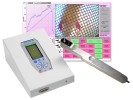Authors
X Peng, H Guo, J Yuan et al
Lab
Department of Urology, Shanghai Children's Hospital, Shanghai Jiao Tong University, Shanghai, 200062, China.
Journal
Stem Cell Research & Therapy
Abstract
Background: Chronic prostatitis/chronic pelvic pain syndrome (CP/CPPS) is an intractable nonbacterial inflammatory disease. Mesenchymal stem cells (MSCs) derived from human induced pluripotent stem cells (hiPSCs, iMSCs) have been well documented for the management of inflammatory and autoimmune disorders because of their powerful immunoregulatory and anti-inflammatory capacities. Recently, studies have indicated that extracellular vesicles (EVs) released from iMSCs hold biological functions similar to their parental cells. This study aimed to evaluate the therapeutic efficacy of EVs released from iMSCs (iMSCs-EVs) on CP/CPPS and to explore the underlying mechanisms.
b>Methods: An experimental autoimmune prostatitis (EAP) model was established in rats by subcutaneous injection of prostate antigen with adjuvant. Then, iMSCs-EVs were injected into EAP rats via the tail vein. Pain behavioral measurements, urodynamic tests, and histopathological analyses were performed at 2, 4, and 6 weeks. The expression of cyclooxygenase-2 (COX-2) was evaluated by immunofluorescence staining and Western blot. The alterations of B cells, Th1 cells, Th2 cells, Th17 cells, and Treg cells in peripheral blood and spleen were analyzed using flow cytometry. The levels of Th1-, Th2-, Th17-, and Treg-related inflammatory mediators were determined by ELISA.
Results: After iMSCs-EVs administration, rats had reduced pain as indicated by the recovery of nociceptive responses to baseline. The voiding pressure was significantly reduced, and the intercontraction interval was increased. The findings of histopathological analysis revealed that iMSCs-EVs could significantly decrease inflammatory cell infiltration and promote basal lamina and glandular epithelial tissue repair. Further studies demonstrated that the overexpression of COX-2 was downregulated by iMSCs-EVs. Meanwhile, the increases in the percentages of Th1 and Th17 cells were dramatically reversed. Also, rats that received iMSCs-EVs showed markedly increased percentages of Treg cells. The levels of those inflammatory mediators showed the same changing tendency.
Conclusions: iMSCs-EVs administration has the potential to ameliorate chronic pelvic pain, improve voiding dysfunction, suppress inflammatory reactions, and facilitate prostatic tissue repair. The functions are mediated by downregulating the overexpression of COX-2 and restoring the imbalance of Th1/Th2 and Treg/Th17 cells.
BIOSEB Instruments Used:
Electronic Von Frey 4 (BIO-EVF4),Electronic Von Frey 5 with embedded camera (BIO-EVF5)

 Douleur - Allodynie/Hyperalgésie Thermique
Douleur - Allodynie/Hyperalgésie Thermique Douleur - Spontanée - Déficit de Posture
Douleur - Spontanée - Déficit de Posture Douleur - Allodynie/Hyperalgésie Mécanique
Douleur - Allodynie/Hyperalgésie Mécanique Apprentissage/Mémoire - Attention - Addiction
Apprentissage/Mémoire - Attention - Addiction Physiologie & Recherche Respiratoire
Physiologie & Recherche Respiratoire
 Douleur
Douleur Système Nerveux Central (SNC)
Système Nerveux Central (SNC)  Neurodégénérescence
Neurodégénérescence Système sensoriel
Système sensoriel Système moteur
Système moteur Troubles de l'humeur
Troubles de l'humeur Autres pathologies
Autres pathologies Système musculaire
Système musculaire Articulations
Articulations Métabolisme
Métabolisme Thématiques transversales
Thématiques transversales SFN2024: Venez rencontrer notre équipe sur le stand 876 à Chicago
SFN2024: Venez rencontrer notre équipe sur le stand 876 à Chicago 
